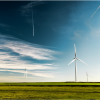A World First: Wind Turbine Upgraded
For the first time in energy industry history, high-temperature superconductors –– rather than permanent magnets –– are being used in wind turbines.
How Does This Affect Engineering?
A working wind turbine recently had its permanent magnets replaced by superconducting tape. By making this switch, it is now possible to build lighter, smaller wind turbines that are less dependent on expensive rare earth elements. Meaning, the price tag of turbines could fall, ultimately leading to lower energy costs.
Wind Turbines Now
Typically, wind turbines use permanent magnets, and often neodymium (iron-boron). On the inside, these magnets –– just like Apex neodymium magnets but on a much larger scale –– turn coils of wind turbines to transform magnetic power into electricity. Along with making the turbines heavy, neodymium requires substantial quantities of rare earth magnets, which can be expensive.
Currently, a wind generator making 1MW of power will contain roughly a metric ton of neodymium in its magnets, while the turbine hosting the new high-temperature gadolinium barium copper oxide (GdBaCuO) superconductors will contain about 1kg of gadolinium, replacing neodymium. With gadolinium costing about $18.70/kg compared to $45.50/kg of neodymium oxide, a switch to gadolinium will not only be weight-efficient but also cost-effective.
How it Works
There are three classes of superconductors: low-temperature superconductors needing to be cooled below 10k, magnesium diboride (MgB2) is in the middle, superconducting at 39k, and GdBaCuO––being high-temperature ceramic superconductors–– at around 100k.
The superconducting layer sits on a steel ribbon for flexibility and strength and is protected from metal poisoning by layers of magnesium oxide and silver. In addition, the steel ribbon also acts as a template for the precise crystalline structure needed by the GdBaCuO, as well as an outer copper layer offering electrical and thermal stabilization.
In Germany, Theva has created magnetic tape made from a composite tape with a ceramic superconducting layer: gadolinium-barium-copper-oxide (GdBaCuO) to be used in the superconductors. The generators made from superconducting magnetic tape versus permanent magnets have been shown to offer significant savings in size and weight while delivering the same amount of power. For scale, this new generator is 1.5m smaller than conventional ones, coming in at about 4m in diameter.
What This Means
The current high-temperature superconductor wind turbine was designed conservatively, whereas, in the future, it will be compact and lightweight, using low-cost generators and changing how we make electrical machines. This achievement in engineering history has given engineers the green light for lower energy costs in the future.
Use Apex Magnets Today
Magnetic technology continues to change the world and the trajectory of engineering and energy use. Our products in particular are great for businesses –– both small and large –– to streamline, organize, and make safe their processes. If you would like to discuss a custom magnet request and get the absolute best product for your situation, contact us today.

